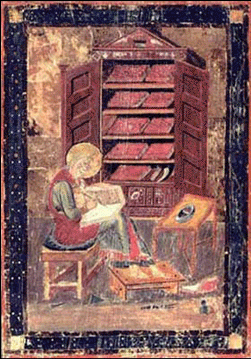
[Note: The following article is posted on the website forum for the Journal of Scriptural Reasoning, hosted at the University of Virginia.]
“The Semiotics of Ayah: A Comparative Introduction”
by Basit Bilal Koshul, Concordia College
Introduction
As is the case with non-Abrahamic religious traditions Judaism, Christianity and Islam are very much concerned with the sacred. But, as Paul Ricoeur points out, the Abrahamic religions have a different understanding of the sacred in contrast to other religions. In the Abrahamic traditions “the accent is placed on speech and writing and generally on the word of God” (Ricoeur, 1995, 48) when referring to the sacred. In contrast the non-Abrahamic religious traditions often see the sacred as being present in the natural world (and the human world that is part of the natural world.) From the non-Abrahamic perspective anything and everything in the natural world can be a place, object or occasion for a hierophany—the numinous irruption of the sacred: “The sacred can manifest itself in rocks or in trees that the believer venerates; hence not just in speech, but also in cultural forms of behavior” (Ricoeur, 1995, 49). Beginning with the Revelation at Mt. Sinai the revealed word “takes over for itself the function of the numinous” and rejects all claims of the numinous/sacred being present anywhere in natural or cultural phenomena (Ricoeur, 1995, 65). For Ricoeur Biblical Revelation, as expressed by the early Hebrew prophets, presents itself not only as a “constant, obstinate struggle against the Canaanite cults—against the idols Baal and Astarte, against the myths about vegetation and agriculture” but also as a struggle against the claims of “any natural and cosmic sacredness…”(Ricoeur, 1995, 55). In short the “hermeneutics of proclamation” that Biblical kerygma is rooted in (or gives birth to) rejects any claims of the sacred being present in the world based on a “phenomenology of manifestation” of the sacred in the natural world. For Ricoeur the origins of contemporary desacralized culture can be traced back to the split between a “hermeneutics of proclamation” and “phenomenology of manifestation” engendered by Biblical revelation. Ricoeur argues that understanding our contemporary cultural condition requires coming to grips with the religious (more precisely the Biblical) origins of the process of desacralization. He posits that an adequate understanding of the origins of the malaise is necessary in order to redress the problematic engendered by it. And redressing the problematic is a most pressing task because a “renaissance of the sacred” has to happen “at least if humankind itself is not to die” (Ricoeur, 1995, 64).
In the late 19th, early 20th centuries the founding fathers of the modern social sciences anticipate some of the key observations made by Ricoeur regarding the problematic side-effects of desacralization. Important elements of what Ricoeur has called desacralization have been labeled as disenchantment (Weber), alienation (Marx) and anomie (Durkheim) by the pioneering social scientists. In spite of the apparent and real differences between them it appears that Ricouer and his predecessors see the loss of meaning and significance as being the most serious problematic that desacralization/disenchantment has given birth to. In pre-Biblical religion a sense of meaning was attached to the empirical realm of reality because it was seen as being inherently infused with divinity (or having direct access to numina). In the following pages I will use the insights offered by Ricoeur, especially his distinction between the “hermeneutics of proclamation” and the “phenomenology of manifestation”, to see how the process of desacralization has been understood by modern social science (as represented by the work of Peter Berger and Mircea Eliade). In agreement with Ricoeur both Berger and Eliade trace the roots of contemporary desacralization back to the origin of monotheistic religion. Then I will offer the work of Hegel, Feurbach and Jung as examples of modernist attempts to understand and redress the problematic caused by desacralization. I will argue that the work of these thinkers has not so much dealt with the issue of meaning, as it has made it even more problematic. Then I move on to describing post-disenchantment possibility suggested by the Qur’anic narrative. Here I will turn to the semiotics of ayah to bridge the gap between “the hermeneutics of proclamation” and the “phenomenology of manifestation”. This part of the discussion will take the work of Muhammad Iqbal, an early 20th century Muslim philosopher, as its starting point. Iqbal notes that the Qur’an sees the entire empirical domain of reality (natural, historical and human) as a sign, token, marker, symbol—an ayah—of the differently-empirical domain of reality (the Divine). In other words, the phenomenological world a sign or symbol of the sacred. At the same time the Qur’an describes itself as being composed of ayaat (plural of ayah). This makes the Qur’anic kerygma a sign, symbol of the sacred in the same way that the phenomenological domain is a sign/symbol of the sacred. I will argue that the semiotics of ayah bridges the divide between the “phenomenology of manifestation” and the “hermeneutics of proclamation” identified by Ricoeur. At the same time I hope to show that Ricoeur’s philosophical investigations into the this divide open up heretofore only potential and obscure possibilities in the Qur’anic narrative.
Click here to read the whole article.